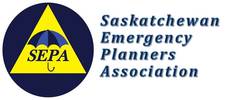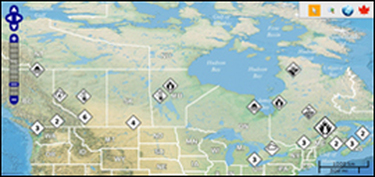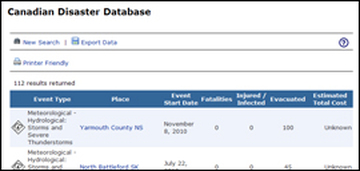The Canadian Disaster Database (CDD)
The Canadian Disaster Database (CDD) contains detailed disaster information on more than 1000 natural, technological and conflict events (excluding war) that have happened since 1900 at home or abroad and that have directly affected Canadians. The CDD tracks "significant disaster events" which conform to the Emergency Management Framework for Canada definition of a "disaster" and meet one or more of the following criteria:
Geospatial
A geospatial mapping component has been added to the CDD, which enables users to define their search of the disaster database by using a spatially-defined area. It also displays query results charted across a map. Geospatial disaster data contained in the CDD can be exported through KML or GeoRSS feeds. Data from both the Classic CDD and the Geospatial CDD can be downloaded into report formats.
- 10 or more people killed
- 100 or more people affected/injured/infected/evacuated or homeless
- an appeal for national/international assistance
- historical significance
- significant damage/interruption of normal processes such that the community affected cannot recover on its own
Geospatial
A geospatial mapping component has been added to the CDD, which enables users to define their search of the disaster database by using a spatially-defined area. It also displays query results charted across a map. Geospatial disaster data contained in the CDD can be exported through KML or GeoRSS feeds. Data from both the Classic CDD and the Geospatial CDD can be downloaded into report formats.
|
Enter the Geospatial Canadian Disaster Database
(requires JavaScript) |


